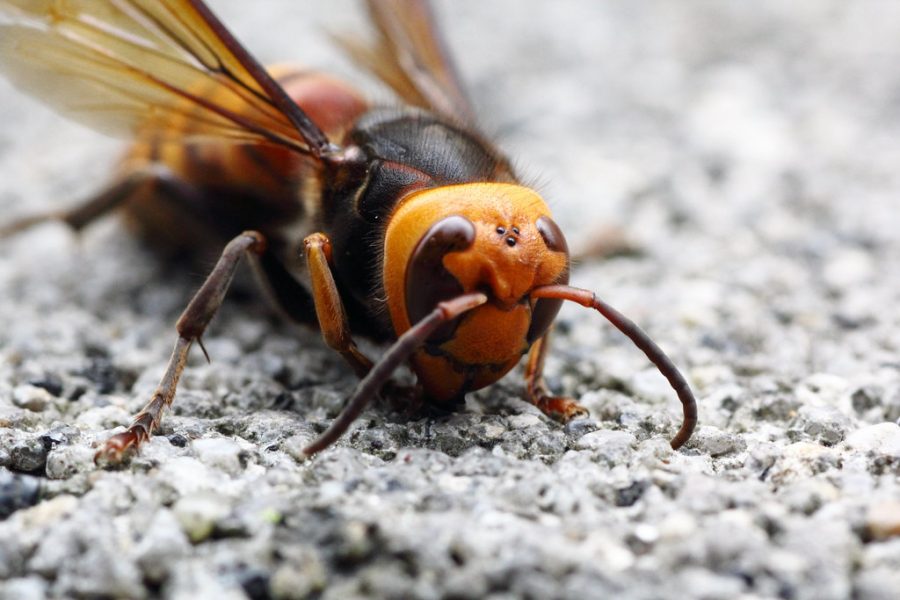Murder Hornets
A deep dive into the effects of Asian giant hornets’ presence on the west coast
In the midst of the COVID-19 outbreak, a plague of murder hornets doesn’t seem as pressing, but it could be worse than you think. These hornets threaten our safety, environmental stability, and the United States economy.
In the last month, residents spotted Asian giant hornets in Washington state. As is the case with many other invasive species, scientists believe that the bees likely came to America from Asia on a ship. The head of the entomology department at the University of Illinois at Urbana-Champaign, May Berenbaum, said, “I can’t imagine why anyone would deliberately bring this [hornets] over. There are so many ways insects can be accidentally transported.”
With a stinger long enough to penetrate a beekeeping suit, and potent, deadly venom, these insects are responsible for the deaths of 50 people per year in Japan. However, the hornets do not normally target humans. In an interview with The New York Times, the British Columbia Ministry of Agriculture stated, “the only time hornets will attack is when their nest is disturbed. Asian Hornets will feed on honeybees and are capable of destroying hives in a short time period.” The way they destroy the hives is by using their large fang-like mandibles to tear off the heads of honeybees. They then fly away with the bee’s abdomen and use it to feed their young.
In recent years, the honeybee population has hit a sharp decline. According to a New York Times article published in May of 2015, “about 5,000 beekeepers reported losing 42.1 percent of their colonies in the 12-month period that ended in April.” This population loss is called colony collapse disorder and seems to result from parasite and pesticide consumption. But with Asian giant hornets in the Pacific Northwest, the bee population is bound to decline further. That is, unless there is a joint effort from bee conservationists and the United States government to do something about it.
In order to save the bees, scientists need to eradicate the Asian giant hornet population soon or it will be impossible to control the situation. While honeybees in Asia have developed immunities to the insects, bees in the United States and the Americas as a whole have not developed these immunities. So, it is significantly more plausible that scientists will be able to erase the hornet population than change the DNA of all honeybees in America. According to entomologist from the Washington State Department of Agriculture Chris Looney, “this is our window to keep it from establishing.” It is nearly impossible to tell how long the hornets have been in the United States, so it is especially important that they move quickly.
Local beekeepers are especially concerned about the hornets’ presence in the United States. Beekeeper Ruthie Danielsen formed a team of fellow beekeepers to help eliminate the hornets. She said, “Most people are scared to get stung by them; we’re scared that they are going to totally destroy our hives.” The Washington State Beekeepers Association (WASBA) has started putting out articles telling “beekeepers beware of giant Asian hornet” and about how to “build your own hornet traps.”
The biggest concern is that the Asian giant hornets will migrate south towards California or elsewhere in the United States. In a 2016 report from the United States Department of Agriculture (USDA), USDA Deputy Under Secretary for Research, Education and Economics Dr. Ann Bartuska stated, “Pollinators are essential to the production of food, and in the United States, honey bees pollinate an estimated $15 billion of crops each year, ranging from almonds to zucchinis.” Essentially, every time the bee population takes a hit, so does the United States economy.
For safety, environmental health, and economic reasons, the United States government needs to make the removal of Asian giant hornets from the United States a priority.

Alex Cotton really enjoys Digestives. They are super good. Alex is particularly fond of their chalky texture and flavor. Her favorite versions are the...







